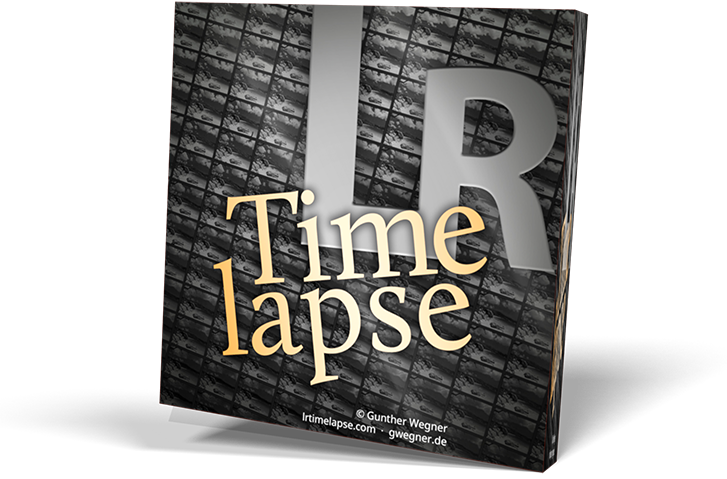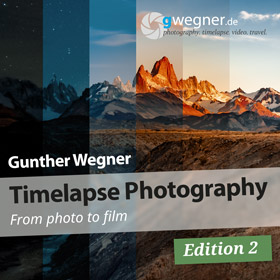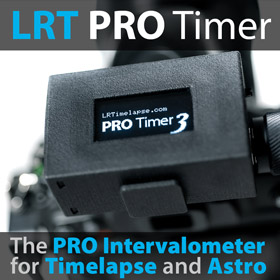
Posts: 45
Threads: 21
Joined: Mar 2015
Posts: 45
Threads: 21
Joined: Mar 2015
Hi Gunther,
Thanks for developing this great product. During a few of my last productions, I ran into a very time-consuming process that might be possible to automate. Hear me out:
I know that shooting RAW is by far the best option for creating good quality timelapses and having maximum control over things such as white balance. However, there are a lot of situations, especially in the field of very long term (more than weeks or months), where having the raw files available is not an option because of logistical or technical restrictions. Take for example the systems of PhotoSentinel. They have a new system that can record RAW, but their main service and ALL of their legacy products are based on JPG capture. For the purpose of those systems (very long term, remote installations) that is fine, but it creates challenges during post-editing.
For me, there are two main variables that make for a smooth, good-looking long term timelapse. 1 is of course exposure. Plenty of tools to get that right, using the features of LRT. 2 is (constant) white balance. The white balance that is baked into the jpg is fixed and whatever white balance setting on the camera, you are going to have shifts in white balance due to the actual changes in light and white balance during the day(s).
Right now, when I edit a long term jpg sequence (exported to DNG using LR), I make two sets of keyframes. One set to control (correct) the extreme differences in exposure. The fine correction is done by visual deflicker. The other set of keyframes is to correct the white balance. Once in lightroom, I use these keyframes to set a similar white balance for those frames and let LRT interpolate between these keyframes for Color Temp en Tint. With very long timelapses, where I am forced (because of activities to be captured) to also use shots from early morning and just before sunset, this results in a very, very timeconsuming process.
It would be fantastic if I could do the following:
- Convert JPGs to DNG's in LR
- Initialise the DNGs in LRT
- Correct for exposure and other basic settings
- Perhaps make visual previews and then:
- Pick a point in the image which should be neutral grey (sort of like the reference area for exposure, but then a point for white balance)
- Have LRT/LR run a process similar to the "White Balance Selector" in LR for each image separately
- Have the option to offset the entire image range in terms of white balance. This could be useful if the point you picked is not 100% grey or because of artistic reasons.
This feature would be very useful for JPG-based workflows, but I think RAW-based long-term workflows could benefit as well. It is not a matter of not being able to correct the white balance, it is just automating a very time-consuming and currently manual process of correcting for changes in the white balance of the actual light, during the morning, day, evening, etc.
Thanks for looking into this.
Regards,
Jorrit Lousberg
Thanks for developing this great product. During a few of my last productions, I ran into a very time-consuming process that might be possible to automate. Hear me out:
I know that shooting RAW is by far the best option for creating good quality timelapses and having maximum control over things such as white balance. However, there are a lot of situations, especially in the field of very long term (more than weeks or months), where having the raw files available is not an option because of logistical or technical restrictions. Take for example the systems of PhotoSentinel. They have a new system that can record RAW, but their main service and ALL of their legacy products are based on JPG capture. For the purpose of those systems (very long term, remote installations) that is fine, but it creates challenges during post-editing.
For me, there are two main variables that make for a smooth, good-looking long term timelapse. 1 is of course exposure. Plenty of tools to get that right, using the features of LRT. 2 is (constant) white balance. The white balance that is baked into the jpg is fixed and whatever white balance setting on the camera, you are going to have shifts in white balance due to the actual changes in light and white balance during the day(s).
Right now, when I edit a long term jpg sequence (exported to DNG using LR), I make two sets of keyframes. One set to control (correct) the extreme differences in exposure. The fine correction is done by visual deflicker. The other set of keyframes is to correct the white balance. Once in lightroom, I use these keyframes to set a similar white balance for those frames and let LRT interpolate between these keyframes for Color Temp en Tint. With very long timelapses, where I am forced (because of activities to be captured) to also use shots from early morning and just before sunset, this results in a very, very timeconsuming process.
It would be fantastic if I could do the following:
- Convert JPGs to DNG's in LR
- Initialise the DNGs in LRT
- Correct for exposure and other basic settings
- Perhaps make visual previews and then:
- Pick a point in the image which should be neutral grey (sort of like the reference area for exposure, but then a point for white balance)
- Have LRT/LR run a process similar to the "White Balance Selector" in LR for each image separately
- Have the option to offset the entire image range in terms of white balance. This could be useful if the point you picked is not 100% grey or because of artistic reasons.
This feature would be very useful for JPG-based workflows, but I think RAW-based long-term workflows could benefit as well. It is not a matter of not being able to correct the white balance, it is just automating a very time-consuming and currently manual process of correcting for changes in the white balance of the actual light, during the morning, day, evening, etc.
Thanks for looking into this.
Regards,
Jorrit Lousberg




